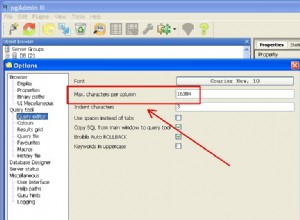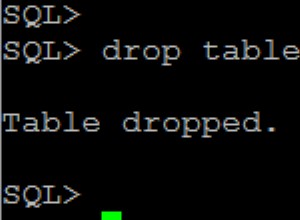Consegui solução de como integrar a página ADF com o EBS e também o Session Management.
Este link abaixo tem útil para mim.
http://mistech.pixnet.net/blog/post/365709524-adf-%E6%95%B4%E5%90%88%E6%96%BC -%28-integrate-%29-oracle-ebs-r12
Ou faça o passo abaixo para mais descrição.
Etapa 01: Criar classes java.Java Class:ConnectionProvide, EBizUti, EBSWrapperFilter, Java Bean:UserInfo
1. ConnectionProvider.java
package com.oracle.view;
import java.sql.Connection;
import java.sql.SQLException;
import javax.naming.Context;
import javax.naming.InitialContext;
import javax.sql.DataSource;
public class ConnectionProvider {
private static DataSource ebsDS = null;
static {
try {
Context ctx = new InitialContext();
ebsDS = (DataSource) ctx.lookup("jdbc/TEST32");
// your datasource jndi name as defined during configuration
if (ctx != null)
ctx.close();
} catch (Exception e) {
throw new RuntimeException(e);
// means jndi setup is not correct or doesn't exist
}
}
private ConnectionProvider() {
super();
}
public static Connection getConnection() throws SQLException {
if (ebsDS == null)
throw new IllegalStateException(
"AppsDatasource is not properly initialized or available");
return ebsDS.getConnection();
}
}
PS:No modo jdbc do ambiente EBS para obter a conexão do banco de dados, você pode entrar na visualização weblogic Services-> Data Sources, como:EBSDataSource JNDI:jdbc / TEST32, e pode ser aprendido a implantar nesse host:oacore_cluster
2. EBizUtil.java
package com.oracle.view;
import java.sql.Connection;
import java.sql.SQLException;
import java.util.logging.Level;
import java.util.logging.Logger;
import oracle.apps.fnd.ext.common.EBiz;
public class EBizUtil {
public EBizUtil() {
super();
}
private static final Logger logger = Logger.getLogger(EBizUtil.class.getName());
private static EBiz INSTANCE = null;
static {
Connection connection = null;
try {
connection = ConnectionProvider.getConnection();
// DO NOT hard code applServerID for a real application
// Get applServerID as CONTEXT-PARAM from web.xml or elsewhere
INSTANCE = new EBiz(connection, "F1CB87199593E5F4E0431F030A0AD0AB31310251131793525291714692481335");
} catch (SQLException e) {
logger.log(Level.SEVERE, "SQLException while creating EBiz instance", e);
throw new RuntimeException(e);
} catch (Exception e) {
logger.log(Level.SEVERE, "Exception while creating EBiz instance", e);
throw new RuntimeException(e);
} finally {
if (connection != null) {
try {
connection.close();
} catch (SQLException e) {
throw new RuntimeException(e);
}
}
}
}
public static EBiz getEBizInstance() {
return INSTANCE;
}
}
PS:APPL_SERVER_ID pode ser obtido sob o $ INST_TOP / appl / fnd / 12.0.0 / secure / TEST32.dbc EBS APP Server pathID do servidor:APPL_SERVER_ID =F1CB87199593E5F4E0431F030A0AD0AB31310251131793525291714692481335
3. EBSWrapperFilter.java
package com.oracle.view;
import java.io.IOException;
import java.sql.SQLException;
import java.util.logging.Level;
import java.util.logging.Logger;
import javax.servlet.Filter;
import javax.servlet.FilterChain;
import javax.servlet.FilterConfig;
import javax.servlet.ServletException;
import javax.servlet.ServletRequest;
import javax.servlet.ServletResponse;
import javax.servlet.http.HttpServletRequest;
import javax.servlet.http.HttpServletResponse;
import oracle.apps.fnd.ext.common.AppsRequestWrapper;
import oracle.apps.fnd.ext.common.AppsRequestWrapper.WrapperException;
public class EBSWrapperFilter implements Filter {
public EBSWrapperFilter() {
super();
}
private static final Logger logger = Logger.getLogger(EBSWrapperFilter.class.getName());
public void init(FilterConfig filterConfig) {
logger.info("Filter initialized ");
}
public void doFilter(ServletRequest request, ServletResponse response, FilterChain chain) throws IOException,ServletException {
AppsRequestWrapper wrapper = null;
logger.info("-current URI =" + ((HttpServletRequest)request).getRequestURI());
try {
wrapper = new AppsRequestWrapper((HttpServletRequest)request, (HttpServletResponse)response, ConnectionProvider.getConnection(), EBizUtil.getEBizInstance());
} catch (WrapperException e2) {
logger.log(Level.SEVERE, "WrapperException error encountered ", e2);
throw new ServletException(e2);
} catch (SQLException e2) {
logger.log(Level.SEVERE, "SQLException error encountered ", e2);
throw new ServletException(e2);
}
try {
logger.info("Created AppsRequestWrapper object." + " Continuing the filter chain.");
chain.doFilter(wrapper, response);
logger.info("- the filter chain ends");
} finally {
//AppsRequestWrapper caches a connection internally.
//AppsRequestWrapper.getConnection()--returns this connection this connection can be used in doGet()/doPost() service layer
//whenever our application requires a connection in order to service the current request.
//When AppsRequestWrapper instance is in use, this connection should not be closed by other code.
//At this point, we are done using AppsRequestWrapper instance so, as good practice, we are going to close (release) this connection now.
if (wrapper != null) {
try {
logger.info("- releasing the connection attached to the" + " current AppsRequestWrapper instance ");
wrapper.getConnection().close();
} catch (SQLException e3) {
logger.log(Level.WARNING, "SQLException error while closing connection--", e3);
throw new ServletException(e3);
}
}
wrapper = null;
}
}
public void destroy() {
logger.info("Filter destroyed ");
}
}
4. UserInfo.java
package com.oracle.bean;
import java.util.Map;
import javax.faces.context.FacesContext;
import javax.faces.event.PhaseEvent;
import oracle.apps.fnd.ext.common.AppsRequestWrapper;
import oracle.apps.fnd.ext.common.Session;
public class UserInfo {
private String user;
private String userInfo;
public UserInfo() {
super();
}
public void setUser(String user) {
this.user = user;
}
public String getUser() {
return user;
}
public void beforePhase(PhaseEvent phaseEvent) {
// Add event code here...
AppsRequestWrapper wrappedRequest =
(AppsRequestWrapper)FacesContext.getCurrentInstance().getExternalContext().getRequest();
Session session = wrappedRequest.getAppsSession();
setUser(session.getUserName());
Map columns = session.getInfo();
StringBuffer temp = new StringBuffer();
temp.append("<table>");
for (Object key : columns.keySet()) {
temp.append("<tr>");
temp.append("<td>");
temp.append(key);
temp.append("</td>");
temp.append("<td>");
temp.append(columns.get(key));
temp.append("</td>");
temp.append("</tr>");
}
temp.append("</table>");
setUserInfo(temp.toString());
}
public void setUserInfo(String userInfo) {
this.userInfo = userInfo;
}
public String getUserInfo() {
return userInfo;
}
}
Etapa 02: Crie a visualização:userInfo.jspx em adfc-config.xml e defina Managed Beans
Layout: PageGroupLayout: layout = vertical
OutPutText: value = "Hello # {pageFlowScope.userInfoBean.user} !!"
InlineStyle = "font-size: medium; color: Red;"
Separator
OutPutText: value = "# User Info: <br> # {pageFlowScope.userInfoBean.userInfo}"
Escape = "false" inlineStyle = "font-size: medium;"
Configurações no Oracle EBS:
Etapa 01: Definir Função:Menu:Responsibiliey:Function WEI_ADFLAB_USERINFOProperties-Type External ADF ApplicationWebHTML-HTML Chamar GWY.jsp?targetPage=faces/userInfo
Etapa 02: Responsabilidade:Configurações do Administrador Funcionala. Serviços Principais → Perfis → Código:FND_EXTERNAL_ADF_URL → Gob. Em seguida, clique no URL do aplicativo ADF externo e pressione Definir valores de perfil
uma. Clique em Definir valores de perfil → Responsabilidadeb. Selecione Responsabilidade e Valorc. Valor:programa convidado no caminho weblogic, como:http://lnxap104:7214/ LAB_EBS-ViewController-context-root/ d. Pressione Atualizar




